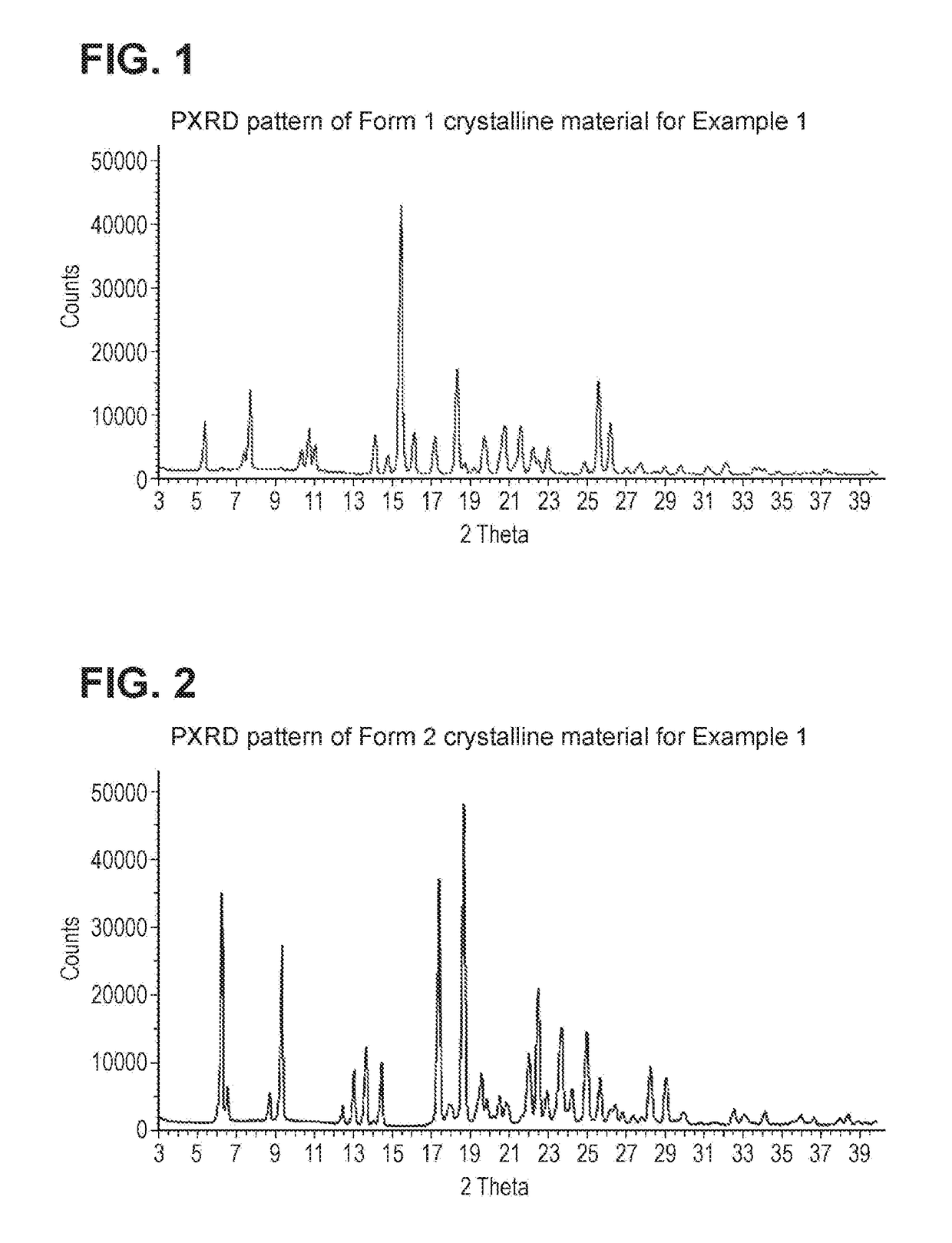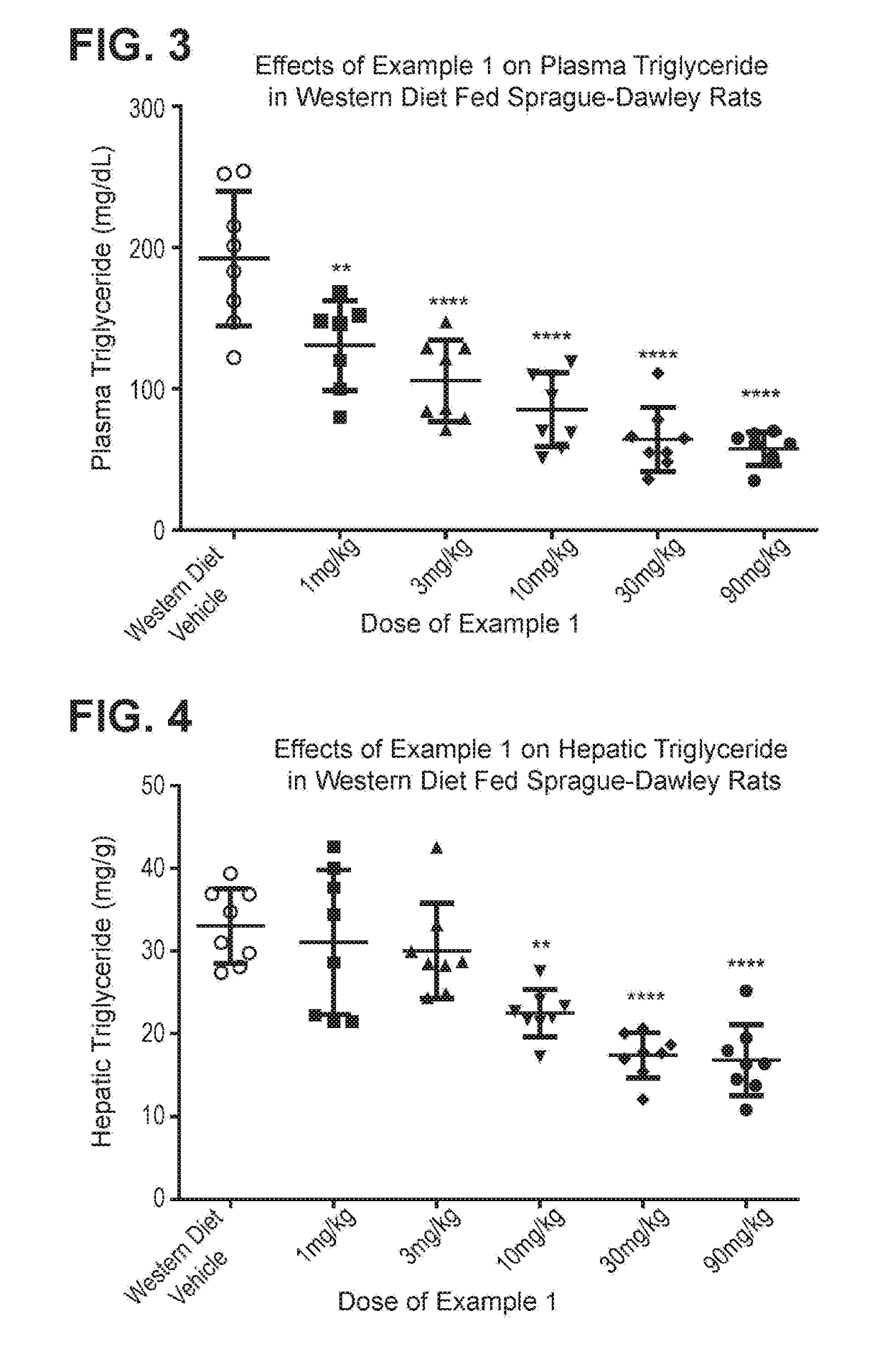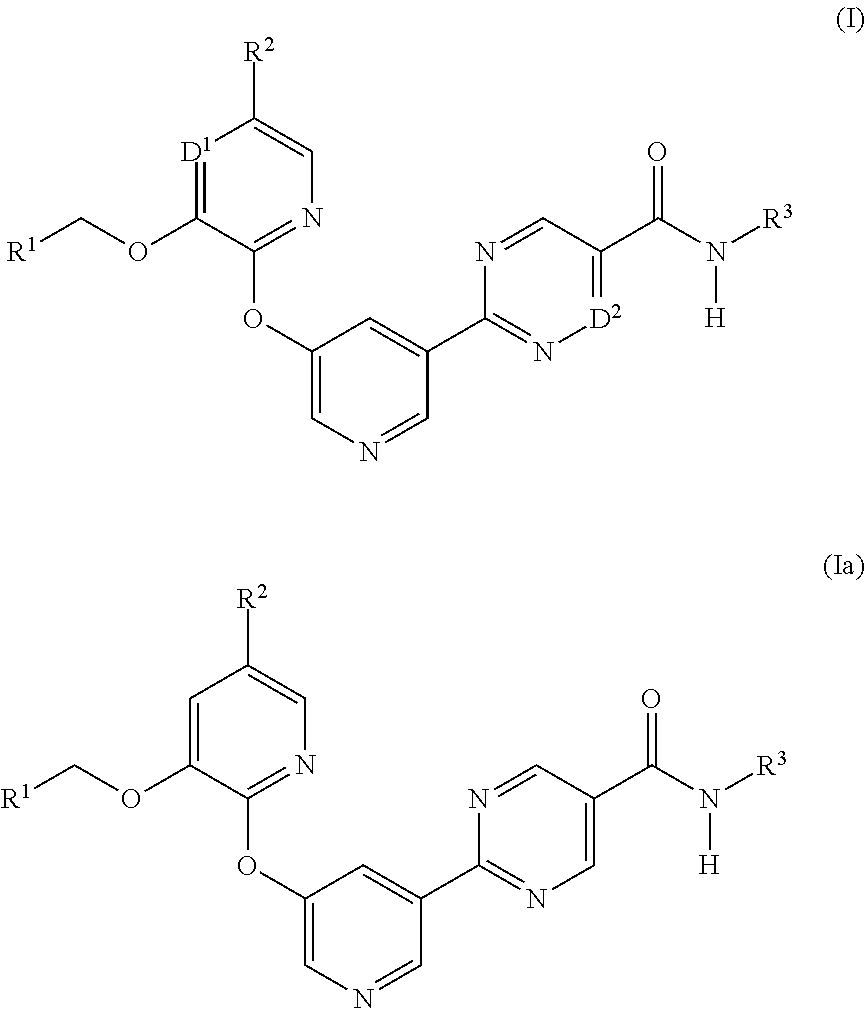Diacylglycerol acyl transferase 2 inhibitors
a technology of acylglycerol and inhibitors, applied in the field of new pharmaceutical compounds, can solve the problems of severe lipemia, defective intraunterine growth, inappropriate nefa flux of adipocytes, etc., and achieve the effects of reducing portal hypertension, hepatic protein synthetic capability, hyperbilirubinemia or encephalopathy
- Summary
- Abstract
- Description
- Claims
- Application Information
AI Technical Summary
Benefits of technology
Problems solved by technology
Method used
Image
Examples
example 1
((3-ethoxypyridin-2-yl)oxy)pyridin-3-yl)-N-(tetrahydrofuran-3-yl)pyrimidine-5-carboxamide
[0238]
[0239]Oxalyl chloride (13.8 mL, 160 mmol, 1.2 equiv) and dimethylformamide (0.510 mL, 6.65 mmol, 0.05 equiv) were added to a suspension of 2-(5-((3-ethoxypyridin-2-yl)oxy)pyridin-3-yl)pyrimidine-5-carboxylic acid (45.0 g, 133 mmol, 1.0 equiv) in dichloromethane (500 mL). The suspension was stirred for 2 hours when a solution was achieved. The reaction mixture was concentrated to yield crude acid chloride as a red solid. A solution of (S)-tetrahydrofuran-3-amine (12.2 g, 140 mmol, 1.05 equiv) and diisopropylethylamine (51.0 mL, 293 mmol, 2.2 equiv) in tetrahydrofuran (100 mL) was added dropwise to a solution of the crude acid chloride in dichloromethane (200 mL) at 0° C. The reaction was allowed to warm to room temperature and stirred for 16 hours. Water (1.0 L) and ethyl acetate (600 mL) were added and the organic layer was separated, washed with saturated sodium bicarbonate, dried over ma...
example 2
((3-Ethoxypyridin-2-yl)oxy)pyridin-3-yl)-N-(tetrahydrofuran-3-yl)pyrimidine-5-carboxamide
[0247]
[0248]The title compound was prepared using general method A with Intermediate 1 (0.31 mmol, 1.0 equiv) and (R)-(+)-tetrahydro-3-furylamine toluenesulfonate salt (124 mg, 1.5 eq). The crude product was purified by flash chromatography using ethyl acetate in heptanes to yield (R)-2-(5-((3-ethoxypyridin-2-yl)oxy)pyridin-3-yl)-N-(tetrahydrofuran-3-yl)pyrimidine-5-carboxamide (91 mg, 70%). 1H NMR (400 MHz, DMSO-d6) δ 1.38 (t, 3H), 1.89-1.98 (m, 1H), 2.15-2.28 (m, 1H), 3.5 (dd, 1H), 3.70-3.78 (m, 1H), 3.85-3.92 (m, 2H), 4.19 (q, 2H), 4.46-4.55 (m, 1H), 7.19 (dd, 1H), 7.58 (dd, 1H), 7.69 (dd, 1H), 8.37 (dd, 1H), 8.64 (d, 1H), 8.96 (d, 1H), 9.28 (s, 2H), 9.39 (d, 1H). MS (ES+) 408.3 (M+H).
Examples 3.1-3.7
[0249]The Examples in Table 2 were prepared by the general procedure A using the appropriate starting materials and analyzed by the methods described below. The R3 variable, intermediates (which ...
example 4
opropan-2-yl)-2-(5-((3-ethoxypyridin-2-yl)oxy)pyridin-3-yl)pyrimidine-5-carboxamide
[0260]
[0261]The title compound was prepared following general procedure B with Intermediate 1 (1.0 g, 1.0 equiv) and 2-amino-2-methylpropionitrile (436 mg, 1.1 eq). The crude product was purified by flash chromatography (50-100% ethyl acetate in heptanes) and treated with charcoal. The resulting residue was recrystallized from ethyl acetate (8 mL) to yield N-(2-cyanopropan-2-yl)-2-(5-((3-ethoxypyridin-2-yl)oxy)pyridin-3-yl)pyrimidine-5-carboxamide (1.1 g, 92%) as a colorless solid. 1H NMR (400 MHz, DMSO-d6) δ 1.38 (t, 3H), 1.74 (s, 6H), 4.18 (q, 2H), 7.18 (dd, 1H), 7.57 (dd, 1H), 7.69 (dd, 1H), 8.38 (dd, 1H), 8.66 (d, 1H), 9.18 (br. s, 1H), 9.30 (s, 2H), 9.40 (d, 1H). MS (ES+) 405.3 (M+H).
PUM
| Property | Measurement | Unit |
|---|---|---|
| temperature | aaaaa | aaaaa |
| temperature | aaaaa | aaaaa |
| temperature | aaaaa | aaaaa |
Abstract
Description
Claims
Application Information
 Login to View More
Login to View More - R&D
- Intellectual Property
- Life Sciences
- Materials
- Tech Scout
- Unparalleled Data Quality
- Higher Quality Content
- 60% Fewer Hallucinations
Browse by: Latest US Patents, China's latest patents, Technical Efficacy Thesaurus, Application Domain, Technology Topic, Popular Technical Reports.
© 2025 PatSnap. All rights reserved.Legal|Privacy policy|Modern Slavery Act Transparency Statement|Sitemap|About US| Contact US: help@patsnap.com



